Pickleball’s popularity is soaring, and as more people join in, understanding the nitty-gritty of the game becomes crucial. One aspect that often gets overlooked but can significantly impact your game is the paddle specifications. It’s not just about picking any paddle; there’s a science and a set of rules behind it.
The right paddle can be your best ally on the court, enhancing your play and ensuring you’re within the game’s regulations. From size and weight to material and surface texture, each detail matters. Let’s dive into the specifics of what makes a paddle legal and why it’s essential to pay attention to these rules.
Importance of Paddle Specifications in Pickleball
In the world of pickleball, the paddle acts as an extension of the player, turning strategy and skill into action on the court. Understanding paddle specifications isn’t just about abiding by the rules; it’s about harnessing them to improve one’s gameplay. Whether you’re a beginner or aiming to step up your game, knowing the nitty-gritty of your paddle can be a game-changer.
Paddle specifications play a pivotal role in how a player interacts with the ball. These specifications, which include size, weight, material, and surface texture, must meet certain standards to ensure the game remains fair and competitive for everyone involved.
- Size matters when it comes to the length and width of the paddle. There’s a maximum limit to ensure no player has an unfair advantage by using an oversized paddle.
- Weight influences a player’s speed and endurance. Heavier paddles offer more power but can slow a player down, while lighter ones allow for quicker movements but might lack in driving force.
- Material impacts the paddle’s durability and the player’s ability to control the ball. From wooden paddles offering a classic feel to graphite and composite models for those seeking precision and speed, the choice of material can significantly affect gameplay.
- Surface Texture plays a crucial role in how the ball reacts upon contact. A rough surface can impart more spin, making it harder for opponents to predict the ball’s trajectory.
Adhering to the pickleball paddle specifications not only ensures compliance with the game’s regulations but also allows players to fine-tune their equipment to match their playing style. A well-chosen paddle can help a player control the game more effectively, turning defense into offense with greater ease and precision.
For competitive players, the right paddle can be the difference between victory and defeat. It’s why professionals spend considerable time testing and selecting their paddles, much like a master craftsman chooses their tools. The balance between paddle size, weight, material, and surface texture can define a player’s signature style on the court, making every swing, every hit, and every point a testament to their skill and strategic thinking.
| Specification | Importance |
|---|---|
| Size | Maximizes reach and impacts swing dynamics |
| Weight | Affects speed, power, and endurance |
| Material | Determines control, feel, and durability |
| Surface Texture |
Understanding Pickleball Paddle Size Regulations
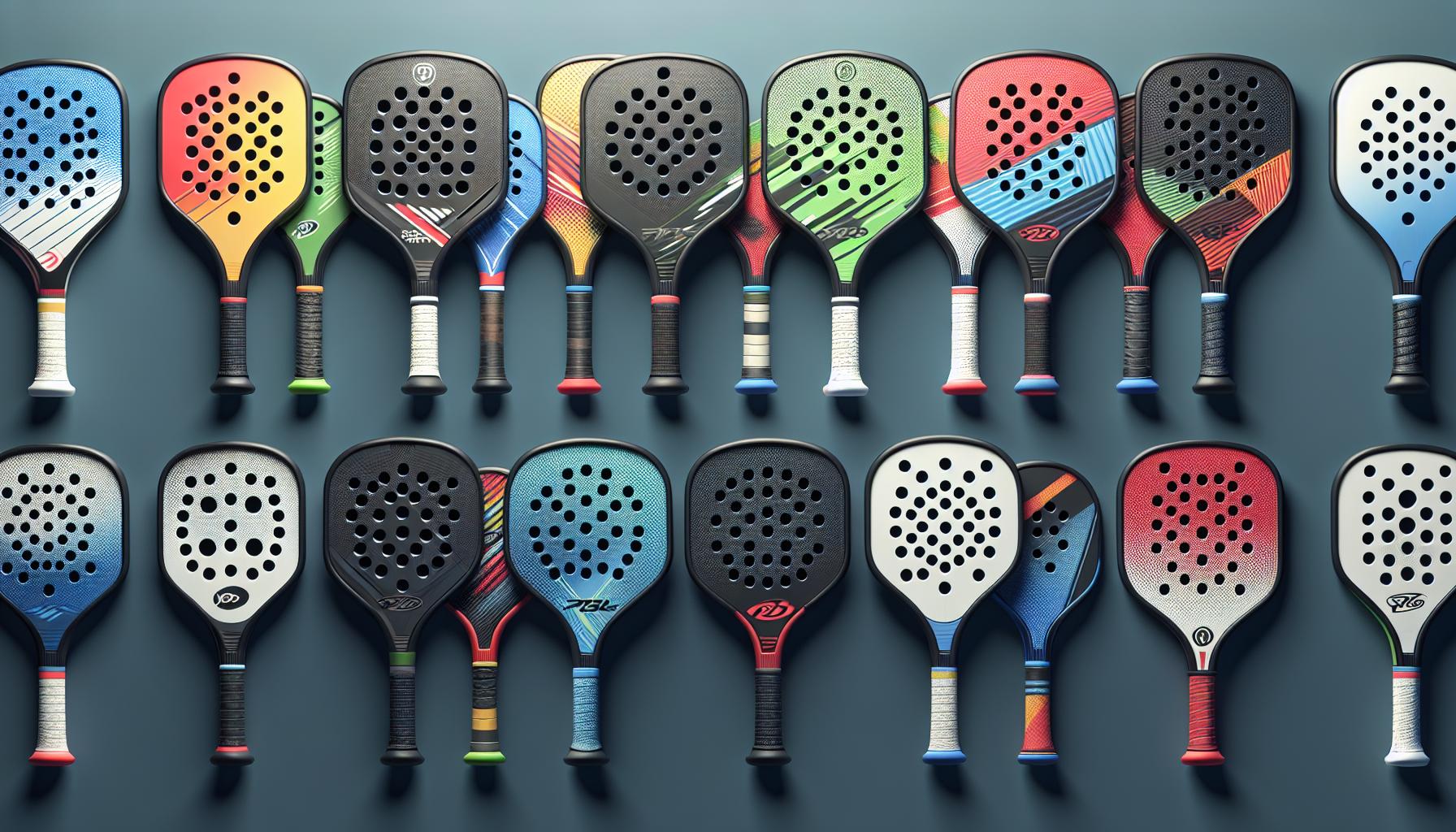
Pickleball, a sport that fuses elements of tennis, badminton, and table tennis, has specific regulations governing the equipment used, especially paddle specifications. These rules ensure fairness and consistency in play across all levels. Among these rules, the size of the paddle is a critical factor that players must consider.
The USA Pickleball Association (USAPA) and the International Federation of Pickleball (IFP) have set forth guidelines that all approved paddles must adhere to. They specify that the combined length and width of the paddle should not exceed 24 inches (60.96 cm), with a maximum length of 17 inches (43.18 cm) and a maximum width of 8.25 inches (20.96 cm). These dimensions include any edge guard and butt cap.
Paddle thickness is not specifically limited by the rules, but most paddles on the market today range from 0.375 to 1.5 inches (0.95 to 3.81 cm) in thickness. This variation allows manufacturers to experiment with different core materials and construction techniques to enhance performance characteristics such as control, power, and feel.
It’s crucial for players to understand that these size regulations are put in place for several reasons. First, they limit the reach of players, ensuring that no one gains an unfair advantage by using an excessively long paddle. Secondly, they maintain a balance between offense and defense, as larger paddles could potentially offer greater power for hits but may also make quick defensive plays more challenging.
When selecting a paddle that fits within these regulations, players should consider their playstyle. For those who prefer a game based on precision and finesse, a smaller paddle might offer better control and maneuverability. On the other hand, players looking for power might favor a paddle at the upper limit of the size regulations to maximize their swing’s impact.
It’s also worth noting that while the size of the paddle is regulated, other aspects such as weight, material, and grip size are not as strictly defined. This leaves room for customization, allowing players to choose a paddle that not only complies with the regulations but also suits their personal preferences and playing style.
Weight Restrictions for Pickleball Paddles
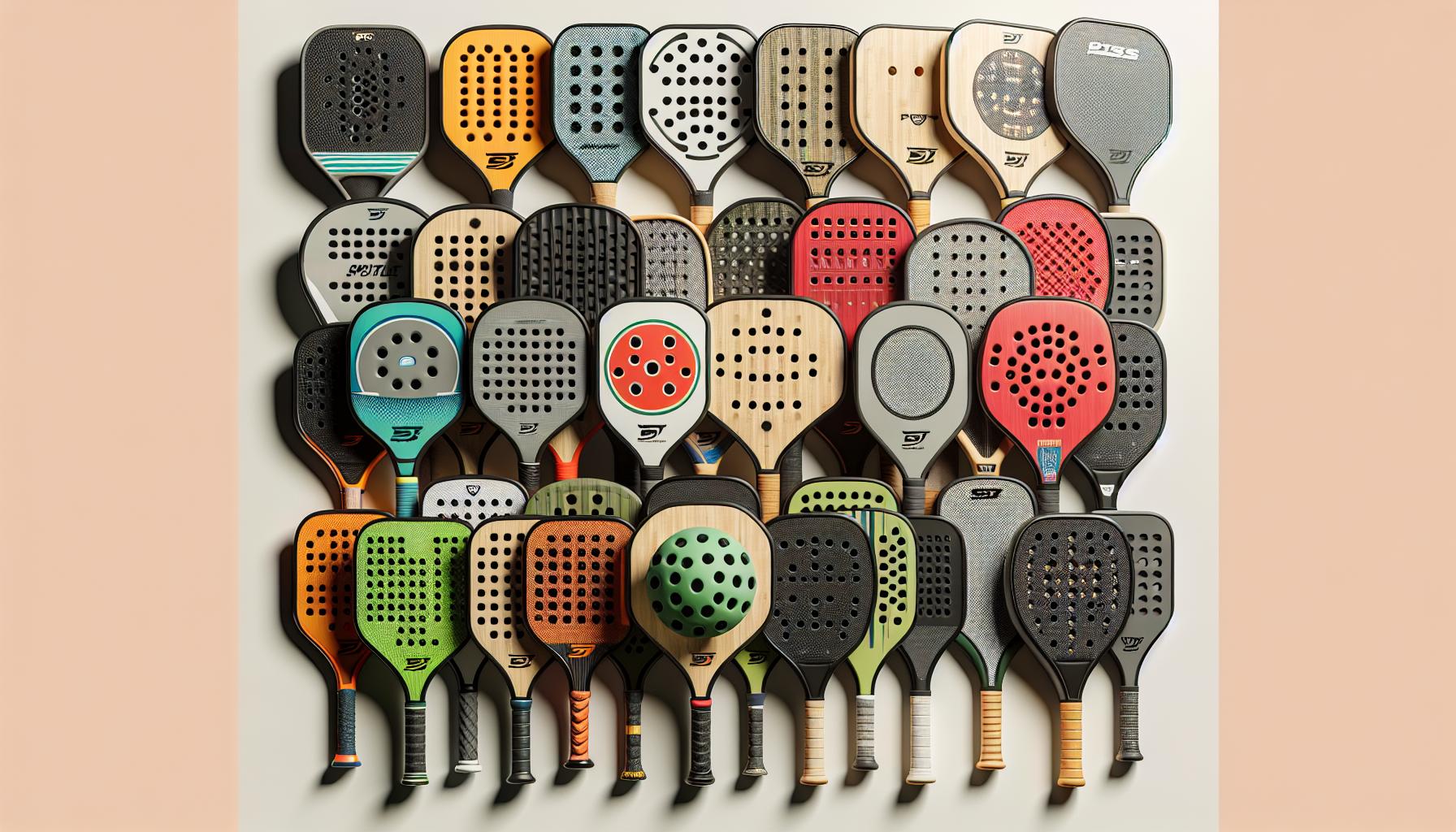
When venturing into the realm of pickleball, understanding the weight restrictions for paddles is crucial for both rookies and veterans of the game. The range of acceptable paddle weights is designed to balance playability with player safety, ensuring an equitable playing field for all. Unlike size regulations, which are quite specific, weight restrictions are more about finding what works best within a certain range.
Pickleball paddles can vary significantly in weight, typically ranging from 6 to 14 ounces. This variance allows players to select a paddle that best aligns with their playing style, strength, and strategy. Lighter paddles offer increased speed and agility, making them excellent for players who value quick reflexes and finesse. On the other hand, heavier paddles provide more power and stability, ideal for those who prioritize force in their serves and returns.
It’s worth noting that while the USA Pickleball Association (USAPA) and the International Federation of Pickleball (IFP) do not set a strict limit on paddle weight, they do encourage players to choose paddles that enhance the spirit of the game. This implies striking a balance between personal advantage and maintaining the intrinsic fun and competitiveness of pickleball.
Selecting the right paddle weight is more of an art than a science. Players often experiment with different weights to find their perfect match. Factors to consider include:
- Personal strength and stamina: Heavier paddles can tire a player out more quickly, while lighter ones may require more effort to generate power.
- Playing style: Aggressive players might lean towards heavier paddles, while strategic players could prefer the maneuverability of lighter ones.
- Injury prevention: Players with joint issues might find lighter paddles less straining.
Manufacturers are continually innovating, creating paddles that push the boundaries of materials and construction to offer a wide range of weights. The use of advanced composites and core materials allows for subtle adjustments in weight without sacrificing power or control.
Here’s a breakdown of typical paddle weights and their common characteristics:
| Weight Range (ounces) | Common Characteristics |
|---|---|
| 6-7.9 | High maneuverability, less power |
| 8-8.9 | Balanced maneuverability and power |
| 9-10 | Enhanced power, reduced quickness |
| 10+ |
Materials Allowed for Pickleball Paddles
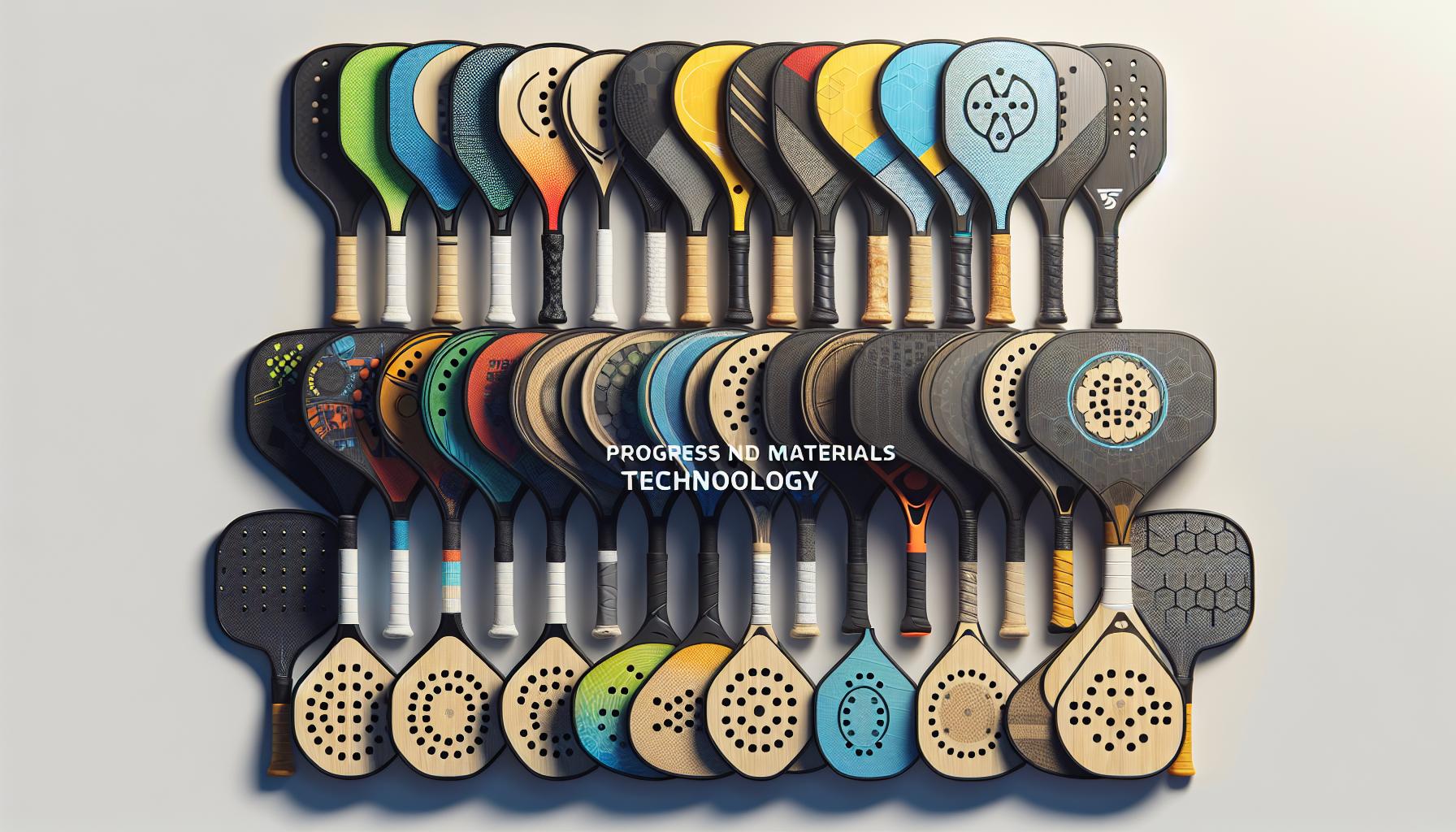
Pickleball paddle material isn’t just about the look or the feel; it directly influences the game’s dynamics, such as ball control, power, and player comfort. Recognizing this, the USA Pickleball Association (USAPA) and the International Federation of Pickleball (IFP) set guidelines to ensure a fair balance between innovation in paddle materials and maintaining the sport’s integrity. The regulations permit a variety of materials, with each offering unique benefits to players.
Traditionally, pickleball paddles were crafted from wood, which provided durability and affordability. Wooden paddles are still available and are often recommended for beginners due to their low cost. However, as technology advanced, manufacturers began exploring other materials to enhance performance and reduce paddle weight.
Composite materials have become increasingly popular in pickleball paddle construction. These paddles are made by combining two or more distinct materials to capitalize on the benefits of each. Common composite materials include fiberglass, carbon fiber, and graphite. These paddles are known for their lightweight nature and ability to provide players with enhanced control and power. For instance, graphite paddles are praised for their responsiveness and light weight, making them a preferred choice for players seeking precision and speed.
| Material | Benefits |
|---|---|
| Wood | Durable, Cost-effective |
| Fiberglass | Flexible, Lightweight |
| Carbon Fiber | Stiff, Powerful, Light |
| Graphite | Responsive, Very Lightweight |
Another significant advancement in paddle technology is the development of polymer cores. Polymer, a type of plastic, is used in the core of the paddle to absorb shock and reduce noise. Paddles with polymer cores are appreciated for their soft control, making them ideal for strategic plays and reducing the chance of injuries from shock vibration.
Manufacturers also experiment with different surface materials for the paddle face. These surfaces can affect the paddle’s grip on the ball and its overall performance. Textured surfaces, for instance, allow for greater spin and control, offering players a competitive edge.
Surface Texture Rules for Pickleball Paddles
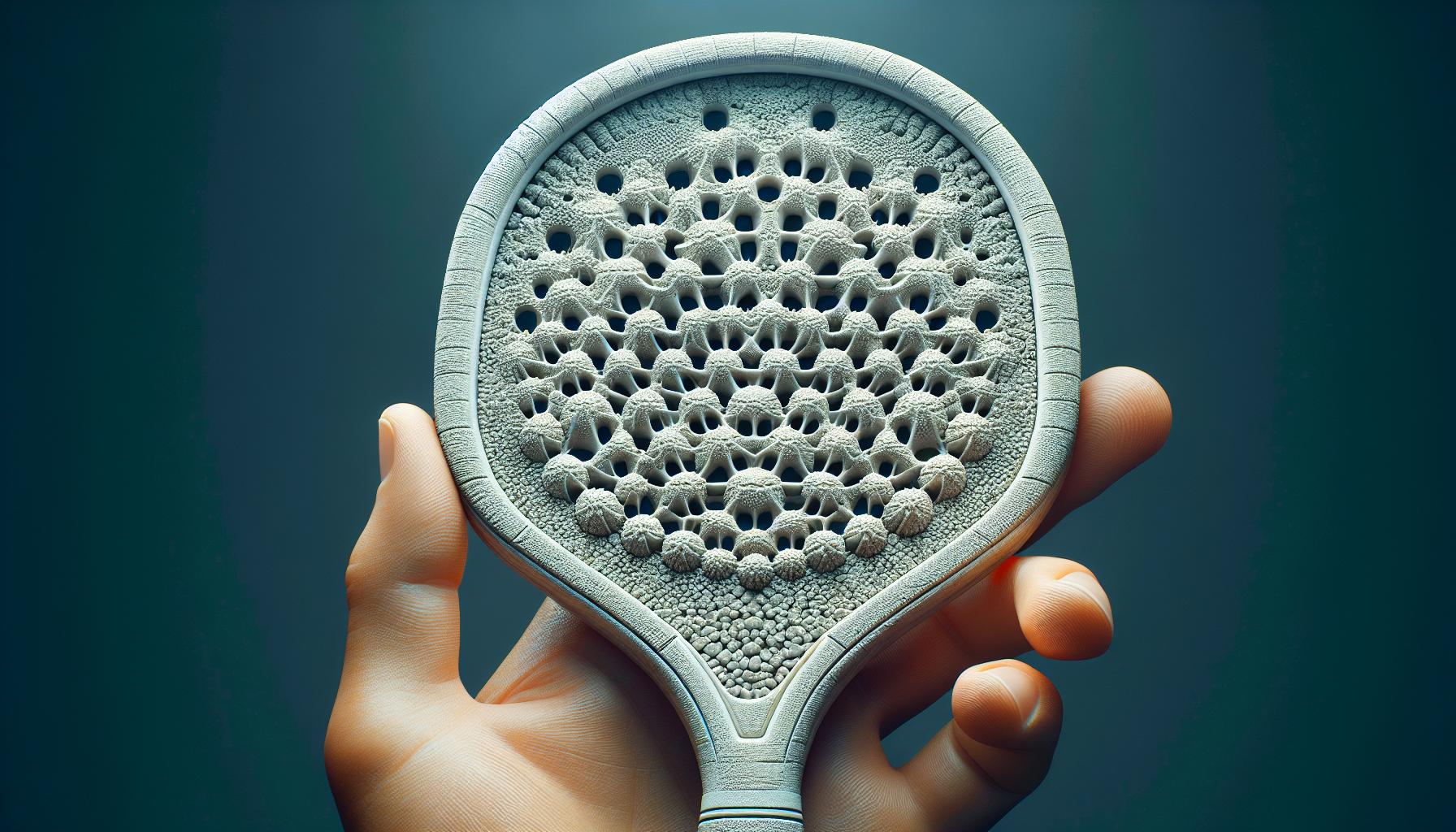
When delving into pickleball paddle specifications, one can’t overlook the importance of surface texture. The surface of a pickleball paddle is not just about aesthetics or personal preference. It significantly affects how the ball interacts with the paddle upon contact. Recognizing this, governing bodies like the USA Pickleball Association (USAPA) and the International Federation of Pickleball (IFP) have set specific rules regarding the surface texture of paddles.
The primary rule states that a paddle’s surface may not contain any features that allow a player to impart undue spin on the ball. This includes any texture, protrusion, or embedded material on the hitting surface that might provide an unfair advantage in terms of ball control and spin. To ensure fairness and maintain the game’s integrity, the USAPA and IFP have standardized methods for testing paddle surface roughness.
Manufacturers undergoing the process of getting their paddles approved must adhere to these guidelines closely. The standard measurement for surface roughness is defined in terms of the Reflective Photographic Analysis. This method evaluates the paddle’s surface by comparing it to a control sample under a specific light. The surfaces must not exceed a certain roughness threshold, ensuring that no paddle provides an undue advantage over another due to its surface texture.
- Key Specification for Surface Roughness:
- Paddles must not reflect light beyond a specific intensity threshold.
- Textures must be evenly distributed and may not create a pattern that affects ball spin excessively.
In addition to the texture, the rules also specify that the paddle’s surface may not have any holes, indentations, or rough edges that could alter the ball’s trajectory unpredictably. These comprehensive regulations ensure that the skill of the player, rather than the engineered characteristics of a paddle, determine the outcome of each shot.
It’s worth noting that while the regulations aim to limit excessive spin caused by the paddle surface, they also encourage innovation within certain boundaries. As materials and technology evolve, manufacturers continue to explore new ways to enhance paddle performance while staying within the rules. This balance between innovation and regulation keeps the sport of pickleball both fair and dynamic.
Conclusion
Navigating the world of pickleball paddle specifications might seem daunting at first but understanding the rules set by the USAPA and IFP is crucial for both players and manufacturers. They ensure that while there’s room for innovation and improvement in paddle performance there’s also a strong emphasis on fairness and integrity in the game. So whether you’re picking out your first paddle or diving into the specifics of surface texture regulations remember that these guidelines are there to make the game enjoyable and competitive for everyone. Happy playing!

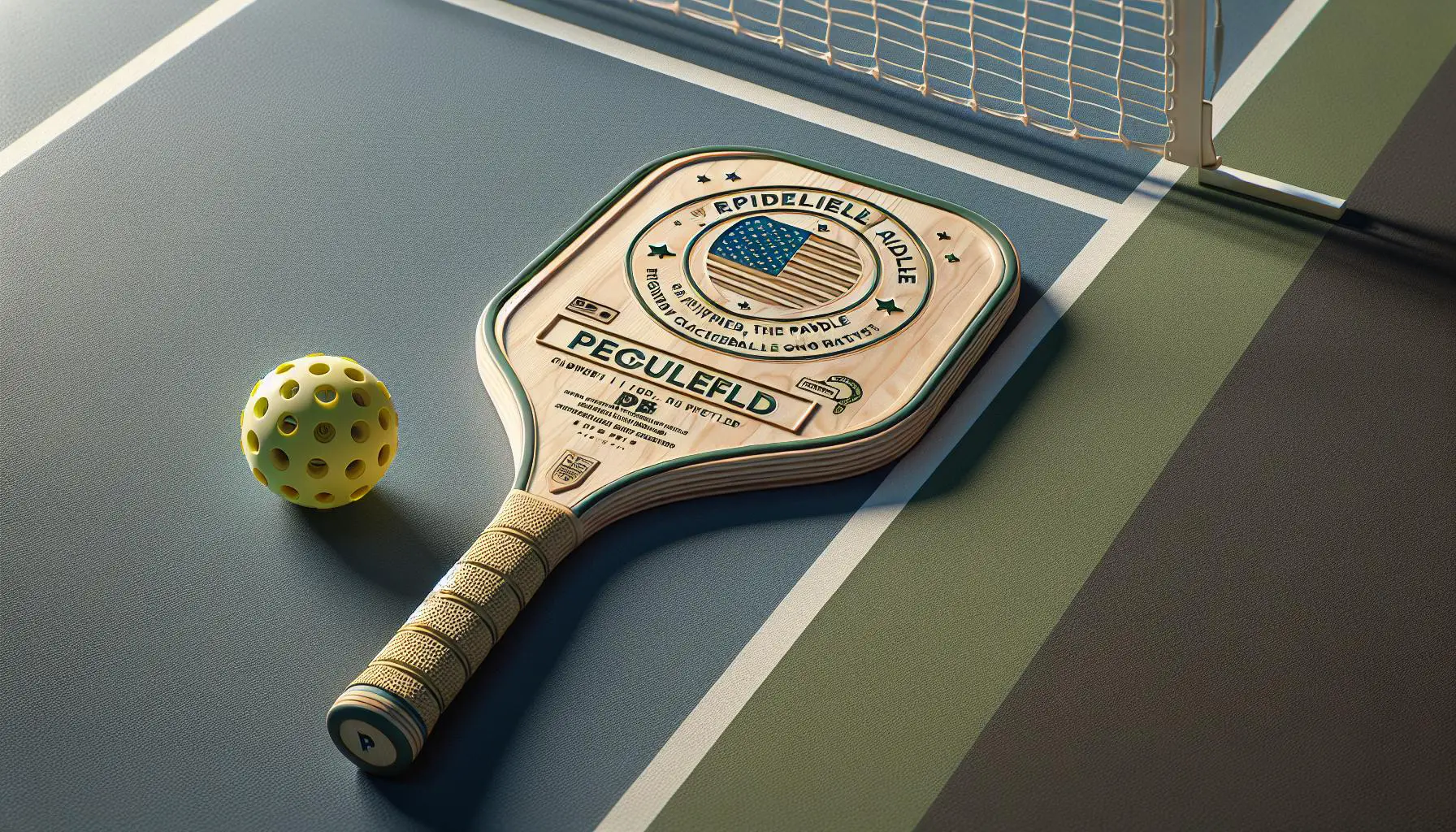












0 Comments